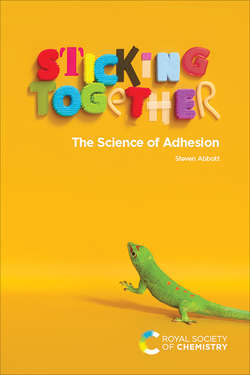Читать книгу Sticking Together - Steven Abbott - Страница 23
На сайте Литреса книга снята с продажи.
2.12 WATER AS THE INITIATOR
ОглавлениеThe beauty of polymerization is that you just need to get it going and then it carries on, in principle, until all the monomer is used up. In practice, polymerizations terminate when they meet impurities or another reacting chain, so we need a moderate number of initiators to get a good conversion. For superglues, urethane glues and silanes the first step of the polymerization reaction can be initiated by water molecules. This is wonderfully convenient and is an element of the popularity of these types of adhesive. It is also frustratingly inconvenient.
It is convenient because there is usually enough moisture in the air or sitting on the surface of the adherends to start things off. No need to add any other chemicals (“activators”). If the atmosphere or surface is too dry, a huff of moist breath or a spritz with water does the job.
It is inconvenient because opening the adhesive package to squeeze out the adhesive allows at least a few water molecules to get into the bulk of the adhesive, which will eventually go solid.
I always have problems with those tubes of silicone adhesives that are applied with a squeeze gun. The tubes are large enough for many jobs, yet I tend to need rather little for any single job, and the jobs are infrequent. For the next job I usually find that some portion of the silicone has gone hard; if I take off the cap to remove a solid blob from within the tube, I can do that job, but have added so much moisture that the tube is fully solid the next time I need it.
